Katakolo, Pylos, Kalamata
Before our departure from Katakolo, we were able to experience the challenges of Greek mooring and the two typical problems with anchoring live. With our neighbours. As already described, none of the docks have mooring lines to attach the vessel to the bow. Each vessel has to do this itself by dropping the bow anchor 3-4 ship lengths away from the dock and running the chain until the stern arrives at the dock. Then the stern lines have to be fixed and the anchor chain is hauled in hard and tensioned. It’s not as difficult as it sounds. However, the helmsman must back the boat as straight as possible so that the chain does not come to rest on the neighbors anchors or chains. This would make it more difficult for them to leave and would not contribute to friendly co-operation.
During one such manoeuvre, we saw a ship’s anchor disappear into the water and then the whole chain just before the dock. The end of the chain was obviously not attached to the vessel and was now resting on the seabed with the anchor, freed from the ship. Our sailing mate Dave suffered the other unfortunate fate of his anchor getting caught in another heavy chain lying on the seabed. Very annoying, especially for a single-handed sailor.
Our anchor chain is too short – Leopard is exemplary
On board, we also discovered something bizarre. In the last 5 years, we had hardly anchored on a bottom deeper than 5 metres in the Caribbean and the Bahamas and therefore rarely let more than 30-35 m of our chain out of the anchor locker. When anchoring in Greece, however, we needed more chain and realised that Leopard had only loaded 50 metres of chain on board instead of the 70 metres we had purchased. We reported this, sent photos of our chain counter and the formidable Leopard crew around Julien made no fuss and gave us the purchase of 70 metres of chain. Mistakes happen – what really matters is how you deal with them. We are really happy with the service from Leopard.
However, getting the chain was an interesting experience. But more on that later.
Kyparissia
We left Katakolo and sailed south for 5 hours in light winds and calm seas along marvellous and completely empty beaches. At Kyparissia we anchored in front of the entrance to a rudimentary harbour basin.
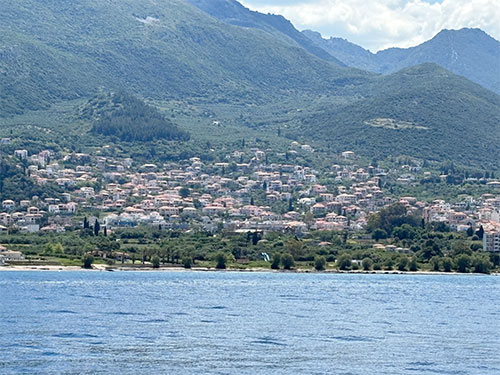
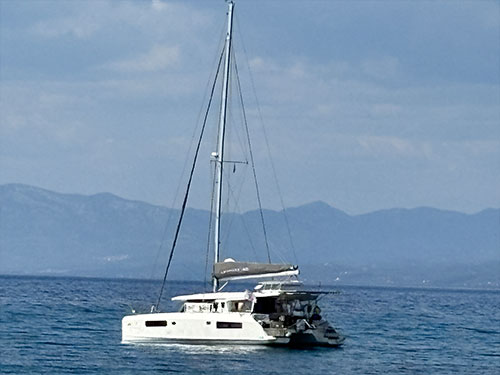
Kyparissia, Rivercafe on anchorage
May is clearly the time when nature awakens, including intensive mating season in the animal world. All around our cat, turtles were courting and busy producing new generations of loggerhead turtles. Mating often takes many hours (up to 24 hours) and during this time two – usually impressively large – shells float just below the surface. Sometimes hard to recognize.
The centre of the small town of Kyparissia with its 5,000 inhabitants is a 15 minutes’ walk from the barely busy harbour. We found vegetables, baked goods and a very nice village centre with lots of restaurants and bars. If there’s one thing the Peloponnese is not short of, it’s cafés and tavernas. We have never found such a high density anywhere else. This also applies to pharmacies.
Despite little wind and a wave of less than 50 cm, the night was very uncomfortably rolly. The Rivercafe swayed so annoyingly in the extremely short swell that we moved on straight away in the morning.
Pylos
The bay of Pylos was our next destination, just under 30 nm away. We reached the sheltered bay around midday. The anchorage of our choice was at the northern end and we enjoyed two quiet days at anchor, apart from the wind that usually picks up significantly in the afternoon. The bay of Pylos is simply beautiful. It is well protected from the swell for sailors, has a good, sandy anchorage between grass patches and is perfect for a walk ashore to one of the many tavernas at the NE end. Built very inconspicuously into the landscape, there are two exclusive hotels, a W and a Mandarin Oriental on the eastern side.
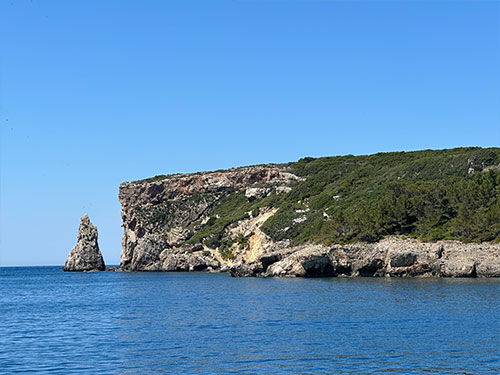
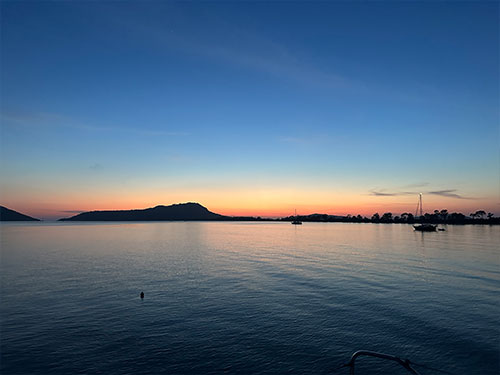

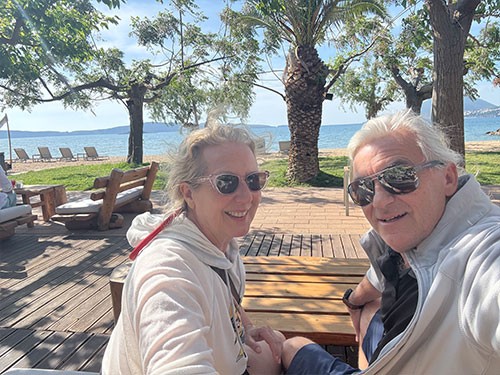 o
o 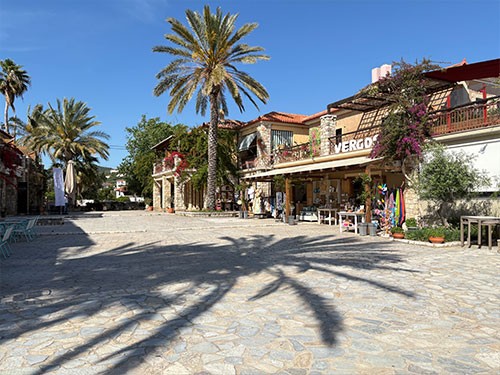
North of the bay of Pylos
On the third day, we anchored the Rivercafe in front of the town of Pylos, more of a small village with 2,500 inhabitants. There, too, we found good sandy areas between grass and rocks. There is a small marina and a harbour basin, but we anchored off the town. This place is not as well protected from swell as the north, but is still very pleasant. The fortress of Pylos is exceptionally beautiful, both in terms of its condition and its location. There is an exhibition on sunken cities in the Peloponnese. There has always been something going on here. Worth a visit and the 10 € entrance fee p.p. The central square in the village of Pylos is shaded by plenty of trees and is ideal for a break and refreshment with its many cafes and tavernas.
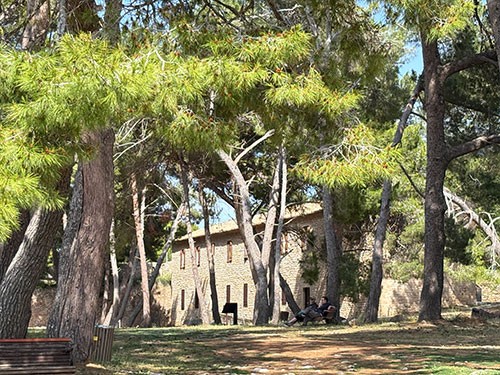
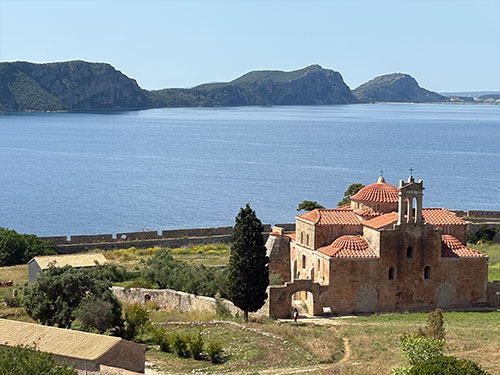
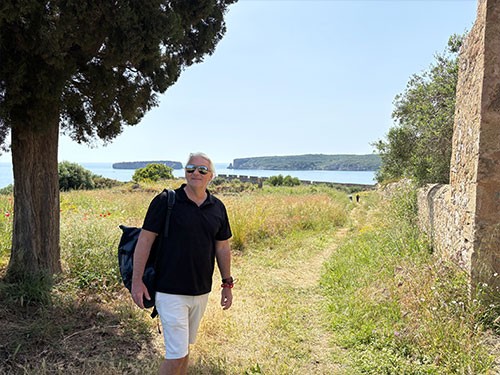
Castle of Pylos
It’s slowly getting summery these days. During the day we’re already cracking 30 degrees, the time for shorts has come. Now the water temperature has to step up (so that Holger can get into the water too, says Karin), we still find the current 20 degrees very fresh (both of us!!!).
Unfortunately, we had to cut our visit to Pylos short because we had to repair a shower that was on strike and pick up a new anchor chain. We could only fix both in Kalamata – not too far away, but we had to go there and had no idea how long it would take.
Kalamata
Kalamata is a real town of 57,000 inhabitants, with a proper marina and a harbour next door. It is picturesquely situated at the end of the Messinian Gulf, at the foot of the impressive Taygetos Mountains, where we are sure we saw remnants of snow from the last snowfall two months ago.
The marina is not cheap – one night costs €110 for us – but it offers perfect service and even has mooring lines. We went alongside. Kostas – the electrician at the marina – arrived the same day and only needed a few minutes with our shower. The new anchor chain was due to be delivered from Athens the day after next. Incredibly fast. We still had a bit of time for sightseeing and excursions.
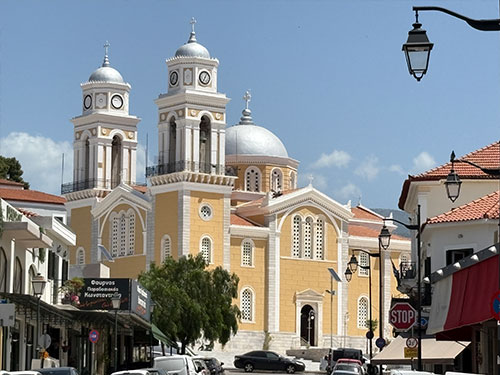
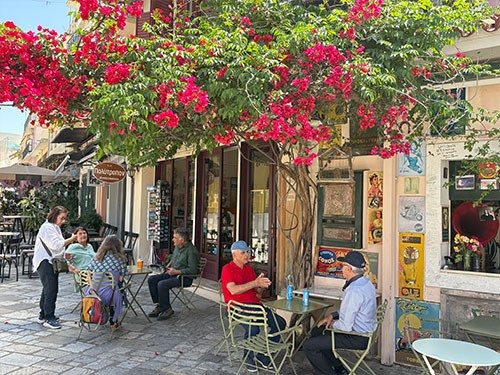
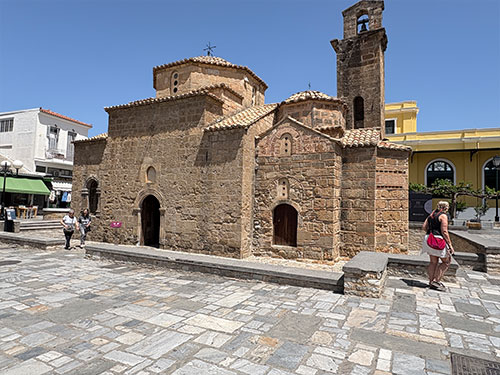
Ein kleiner Blick nach Kalamata
Kalamata has very nice boroughs and a nice centre with lots of shops for everything. If you find the right borough, it’s a wonderful place to stroll around, have a coffee now and then in one of the countless cafés and watch the hustle and bustle. Despite its attractiveness, Kalamata is very untouristy. Incidentally, the city is famous for the olive of the same name, which actually tastes delicious.
Messene (Messini)
We used our sailing break for excursions. We hired a car and drove to Messene (Messini). This is probably the most impressive ancient site we have ever visited – and we have already visited many. 30 km inland, there is a very well-preserved complex with a stadium, theatres and temples. The 2,400-year-old stadium looks as if it could be used straight away. Messene is surrounded by abundant olive groves and the tranquillity of nature with the early summer warmth creates an incredible atmosphere.
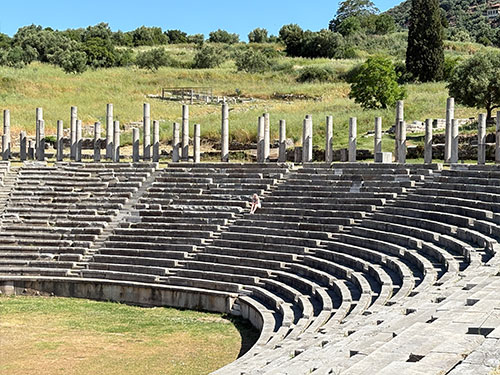
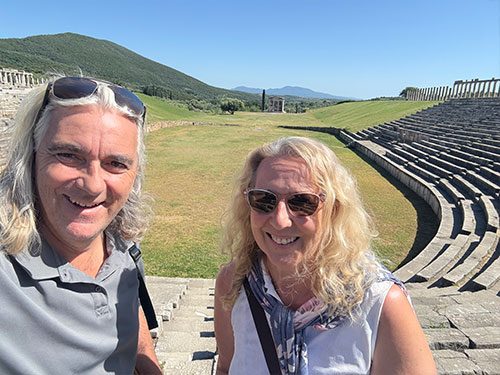
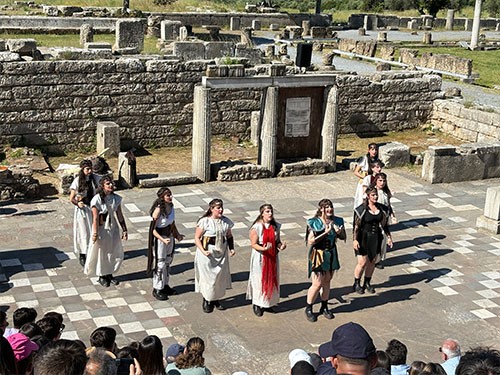
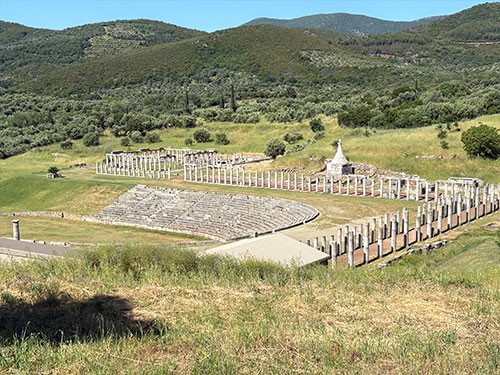
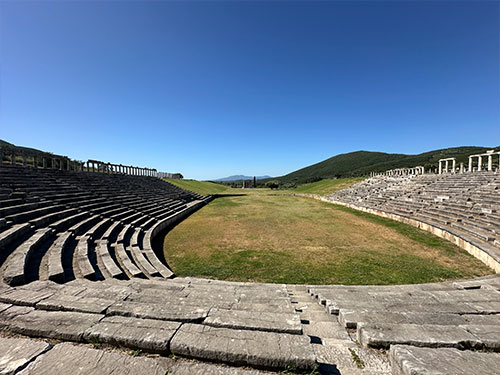
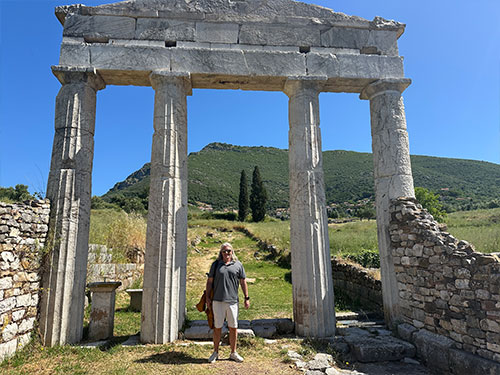

historic site in fantastic shape
In one of the theatres in the complex, schoolchildren put on plays. The acoustics were astonishing and are still puzzling today.
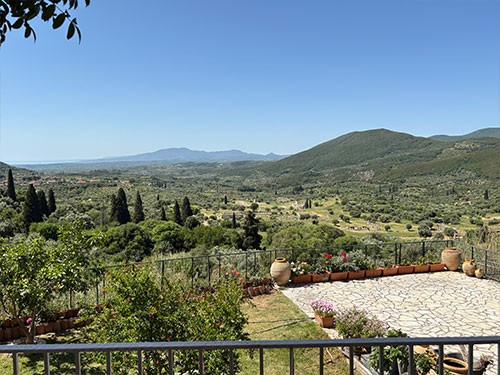
Lunchbreak with a view
Koroni
Another trip took us to Koroni, on the western side of the Messinian Gulf. A very charming little village on the water, with moorings for boats. Very Greek, very picturesque. Koroni was also on our itinerary as a stop, but we know all about plans.
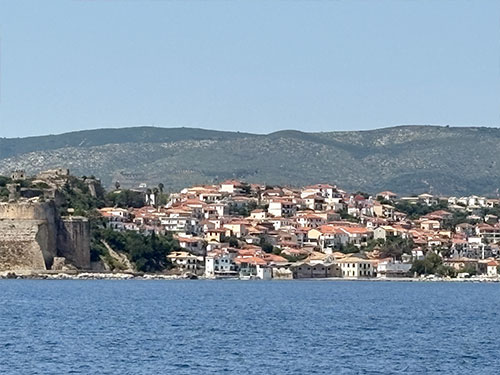
Koroni from the seaside
Since our excursions in the region, we have been wondering who is supposed to eat the incredible amount of olives that grow everywhere here. That should be enough to feed the entire world population. And what about the enormous amount of olive oil? Undoubtedly the most delicious we know. But such quantities? Are there people who bathe in it?
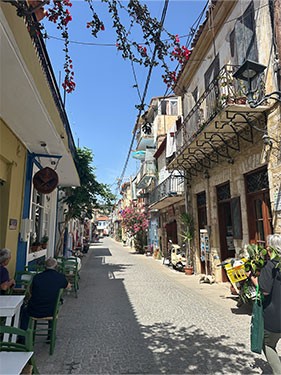
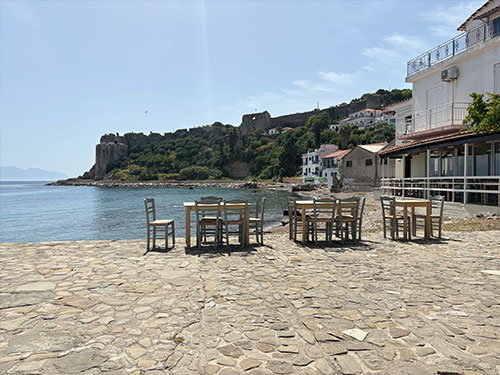
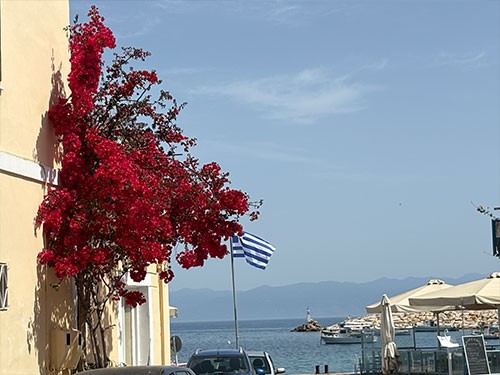
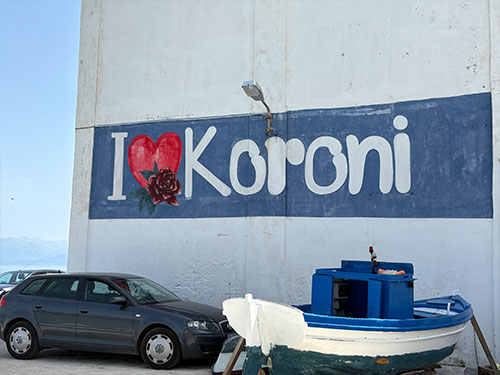
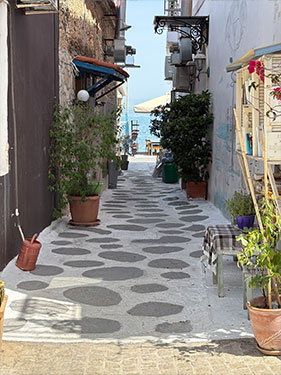
Koroni views
And then came the chain. We pulled the chain on board and secured our Ultra anchor very thoroughly. I was supposed to pay in a small shop in the town. Although I was promised a quote and an invoice, everything was very difficult. The lady in the shop only spoke Greek and she was very stubborn. In fact, as I learnt on this occasion, invoices cannot be issued to private individuals in Greece. But how was I supposed to submit the costs to Leopard without an invoice? I was given a receipt – illegible in the Greek alphabet. You could translate it, someone said. The fact that the rest of the world uses a different alphabet didn’t really seem relevant. I was about to return the chain until, after an hour of palaver and workshops with all sorts of helpful, English-speaking Greeks, a solution was found.
The Greeks seem to me to be really panicking to avoid accounting problems. It’s probably a Schäuble (the former German Finance Minister who played a very distinctive role during the Greek financial crisis) after-effect from the dark ages. It’s really absurd.
We will now leave beautiful Kalamata again. The weather called the shots – we didn’t get a vote. More on that next time. / Holger Binz

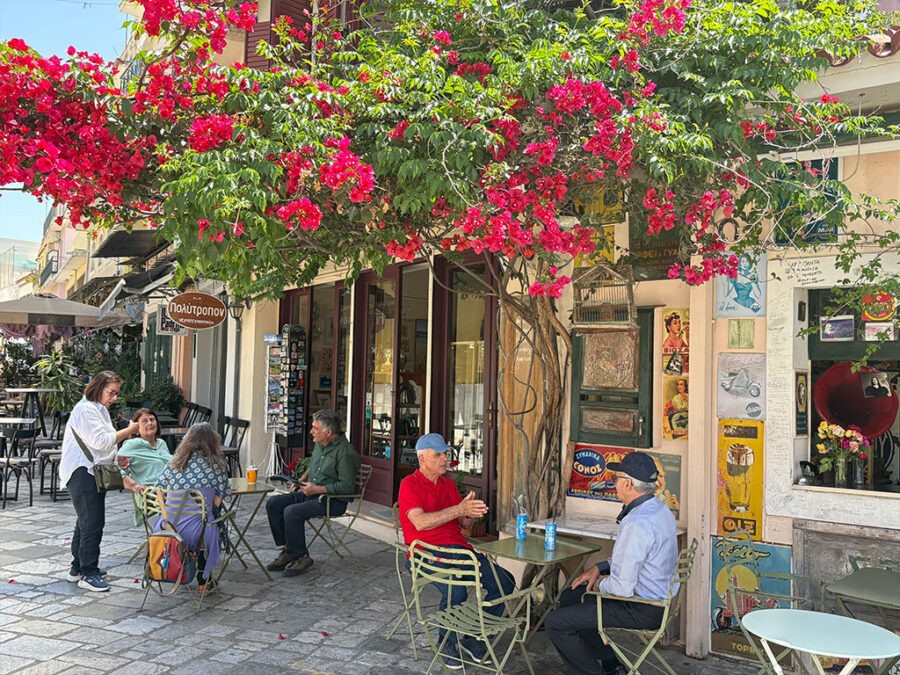
Beeindruckende Bilder. Vielen Dank.
Lieben Gruss
Jürgen